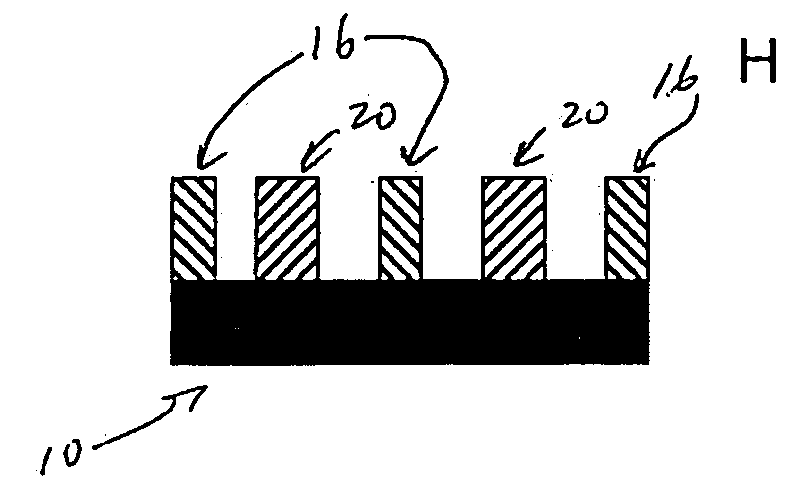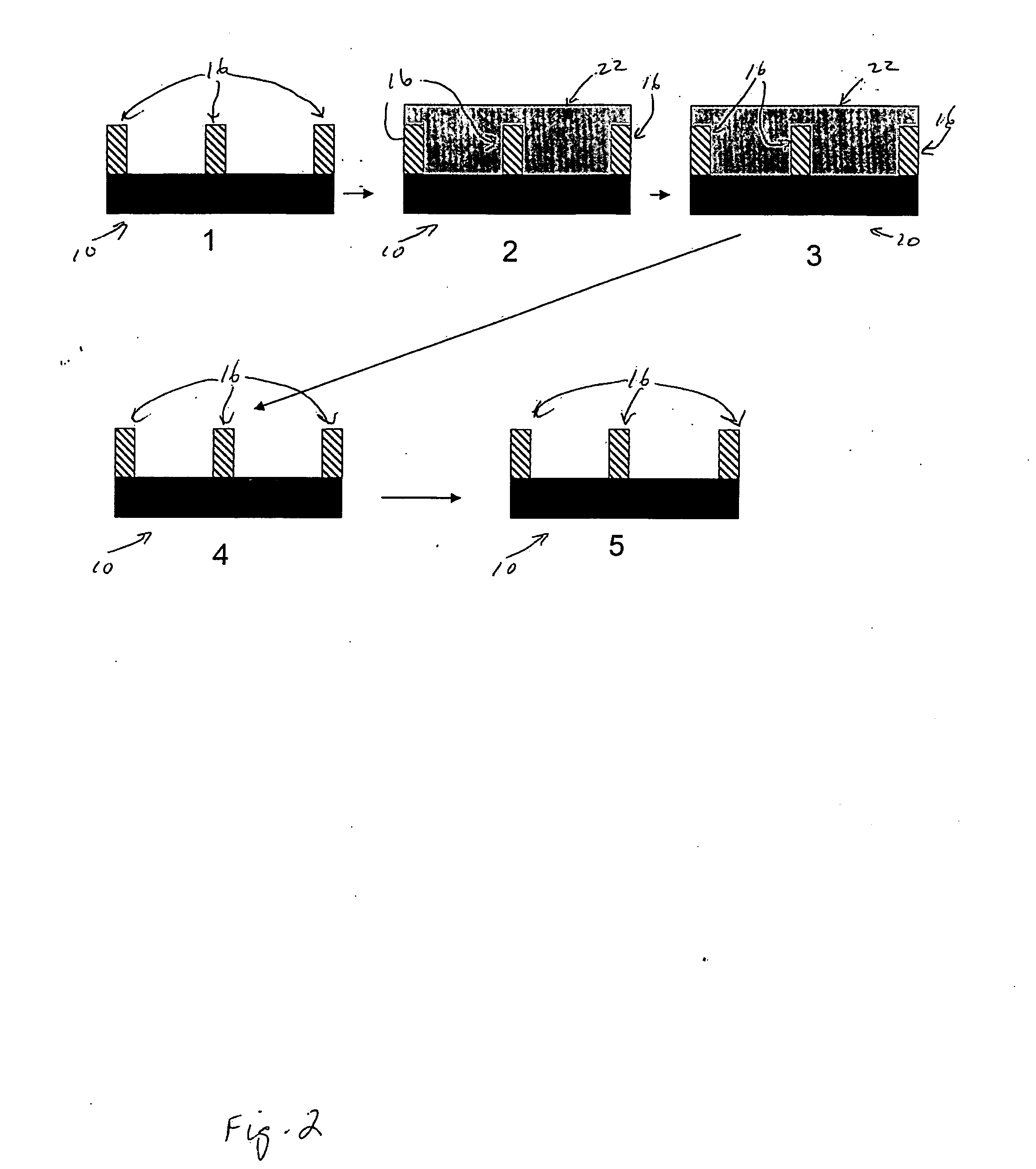Photoresist Image-forming Process Using Double Patterning
- Summary
- Abstract
- Description
- Claims
- Application Information
AI Technical Summary
Benefits of technology
Problems solved by technology
Method used
Image
Examples
example 1
Synthesis of Poly(N,N-dimethylaminoethylacrylate-co-N-vinylpyrrolidone)
[0068]A mixture of N,N-dimethylaminoethylacrylate (25.70 g, 0.1795 mol), N-vinylpyrrolidone (19.95 g, 0.1795 mol), 6.85 g of initiator, azobisisobutyronitrile, and 97.50 g of acetonitrile were added to a 500 ml round bottom flask equipped with water condenser and nitrogen inlet. The initiator concentration was 15 wt % relative to the total weight of the monomers. Other solvents such as isopropyl alcohol (IPA), 2-butanone and methanol can also be used instead of acetonitrile. Nitrogen gas was purged into the solution for 30 minutes at room temperature with stirring. After the nitrogen purge, the reaction solution was heated to 65° C. The polymerization reaction was carried out for 6 hours. After the completion of polymerization, the polymer solution was cooled to 30° C. and concentrated using rotary evaporator. The concentrated solution was precipitated in diethyl ether. Other solvents such as diisopropyl ether an...
example 2
Hardening Composition
[0070]A mixture of 2.9630 g of poly(N-N,dimethylaminoethylacrylate-co-N-vinylpyrrolidone (polymer from Example 1), 0.0370 g of surfactant SF-485 (an acetylenic based non-ionic surfactant available from Takemoto Oil & Fat Co.), and 1.000 g of 2-(2-aminoethylamino)ethanol were dissolved in 96.000 g of deionized (DI) water to prepare a hardening composition. The solution was filtered using 0.2 μm filter. The total solid content in the formulation was 4%.
[0071]Film thicknesses measurements were performed on a Nanospec 8000 using Cauchy's material-dependent constants derived on a J. A. Woollam® VUV VASE® Spectroscopic Ellipsometer. Photoresist on bottom antireflective coatings were modeled to fit the photoresist film thickness only.
[0072]CD-SEM measurements were done on either an Applied Materials SEM Vision or NanoSEM. Cross-sectional SEM images were obtained on a Hitachi 4700.
[0073]Lithography exposures were performed on a Nikon NSR-306D (NA: 0.85) interfaced to a ...
example 3
Hardening Composition
[0077]A mixture of 2.9630 g of poly(N-N,dimethylaminoethylacrylate-co-N-vinylpyrrolidone) (polymer from Example 1 but with monomer ratio of X:Y), 0.0370 g of surfactant SF-485 (an acetylenic based non-ionic surfactant available from Takemoto Oil & Fat Co.), and 1.000 g of 2-(2-aminoethylamino)ethanol were dissolved in 96.000 g of deionized (DI) water to prepare a hardening composition. The solution was filtered using 0.2 μm filter. The total solid content in the formulation was 4%.
PUM
| Property | Measurement | Unit |
|---|---|---|
| Temperature | aaaaa | aaaaa |
| Temperature | aaaaa | aaaaa |
| Temperature | aaaaa | aaaaa |
Abstract
Description
Claims
Application Information
 Login to View More
Login to View More - R&D
- Intellectual Property
- Life Sciences
- Materials
- Tech Scout
- Unparalleled Data Quality
- Higher Quality Content
- 60% Fewer Hallucinations
Browse by: Latest US Patents, China's latest patents, Technical Efficacy Thesaurus, Application Domain, Technology Topic, Popular Technical Reports.
© 2025 PatSnap. All rights reserved.Legal|Privacy policy|Modern Slavery Act Transparency Statement|Sitemap|About US| Contact US: help@patsnap.com



